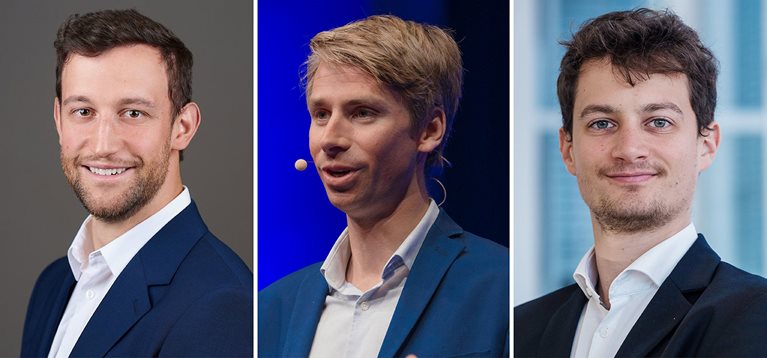A major North American dairy cooperative wanted to establish a decarbonization program and a plan to rally their farmers. A global steel company was challenged by tracking over 800 decarbonization initiatives. A private equity firm needed a tool to monitor its portfolio companies for Scope 3 emissions compliance.
Over the past 18 months, our sustainability experts have been using Catalyst Zero to help organizations such as these develop and implement innovative, fact-based decarbonization plans. Catalyst Zero is a digital platform—part analytics engine, part deep IP library—that integrates McKinsey’s sustainability expertise, industry technical know-how, and transformation experience.

Using Catalyst Zero, we’ve served more than 100 organizations at different points in their journeys. Some projects map out a first-time carbon footprint or pressure-test existing plans and targets, while others involve rolling out decarbonization roadmaps across multiple locations, including organizational change and capability building.
“What sets Catalyst Zero insights apart from other tools is the financial analysis: we help clients understand the capital and operating expenses of each option within their plan,” explains Miquel Ferrer, a solution manager. “This is crucial because once you have the strategy, the next step is to garner support across the broader organization to secure funding for the plan.”

Catalyst Zero
The first step of any project is specifying the datasets that can be used to convert all client activity, such as fuel for heating buildings, into a baseline measure across Scope 1,2, and 3 emissions. “This can be challenging as many clients don't have the right data in place to start,” points out Tim Vroman, a senior asset leader. “Our decarbonization experts and analytic tools help them make sense of their unstructured data and identify emission hotspots.”
Once the baseline is established, the engine sorts through Catalyst Zero’s proprietary Decarbonization Lever Library, matching the most effective abatement actions to each type of emission. “The library is really at the heart of Catalyst Zero. It contains detailed business cases including required investment, additional expenses, and expected savings for more than 1,200 carbon abatement technologies associated with every single material, every single process emission out there,” explains Tim. “It's constantly updated, on a regional basis, to ensure we are advising clients of the most effective action available.”
The library is really at the heart of Catalyst Zero. It contains detailed business cases… for more than 1,200 carbon abatement technologies.
It can produce a plan and related financials in as little as a week, including roadmaps for product design and procurement processes. One CTO recently remarked: “It is unbelievable that you can do in two days what takes my R&D team several months.”
Earlier this year, a major beverage producer had publicly set ambitious decarbonization targets and wanted help in thinking through how to achieve them. As a consumer packaged goods (CPG) company, most of their emissions were in Scope 3—with their upstream suppliers, who provide the various ingredients they use.
“We built a very granular view of their value chain evaluating the key inputs to their products to identify hotspots for emissions,” outlines Barnabas Gulyas, a solution associate. “For example, sugar is a key ingredient, and we examined the sugar processing that took place before it reached their factories: what are the sorts of fertilizers used and the level of greenhouse gases they contained? What kind of energy is being used during the crystallization process? What materials are used in the packaging?”
The team created a marginal abatement cost curve (MACC) that included all of the abatement levers to help the client understand where the best opportunities were to invest—or co-invest with their suppliers—to reduce the emissions.
The analysis also highlighted no-regret moves such as using one of the by-products of sugar processing, bagasse, a biofuel, as an additional energy source. “We combined it with a market view of their suppliers—for example, how ready were they to engage?—to help clients strategize the kind of conversations they could have,” says Barnabas.
An assessment often yields surprises. A client who produces industrial machinery had never calculated the “downstream” emissions created by their products once they leave the factory. These are especially difficult to analyze—and they amounted to over 80 percent of their baseline.
“This was a surprise, and would become an important part of their abatement strategy,” recalled Tim. “But we were able to project that the emission sources will actually come down significantly as grids in different geographies adapt green electricity sources—this insight was only possible by having such a granular transparent analysis.”